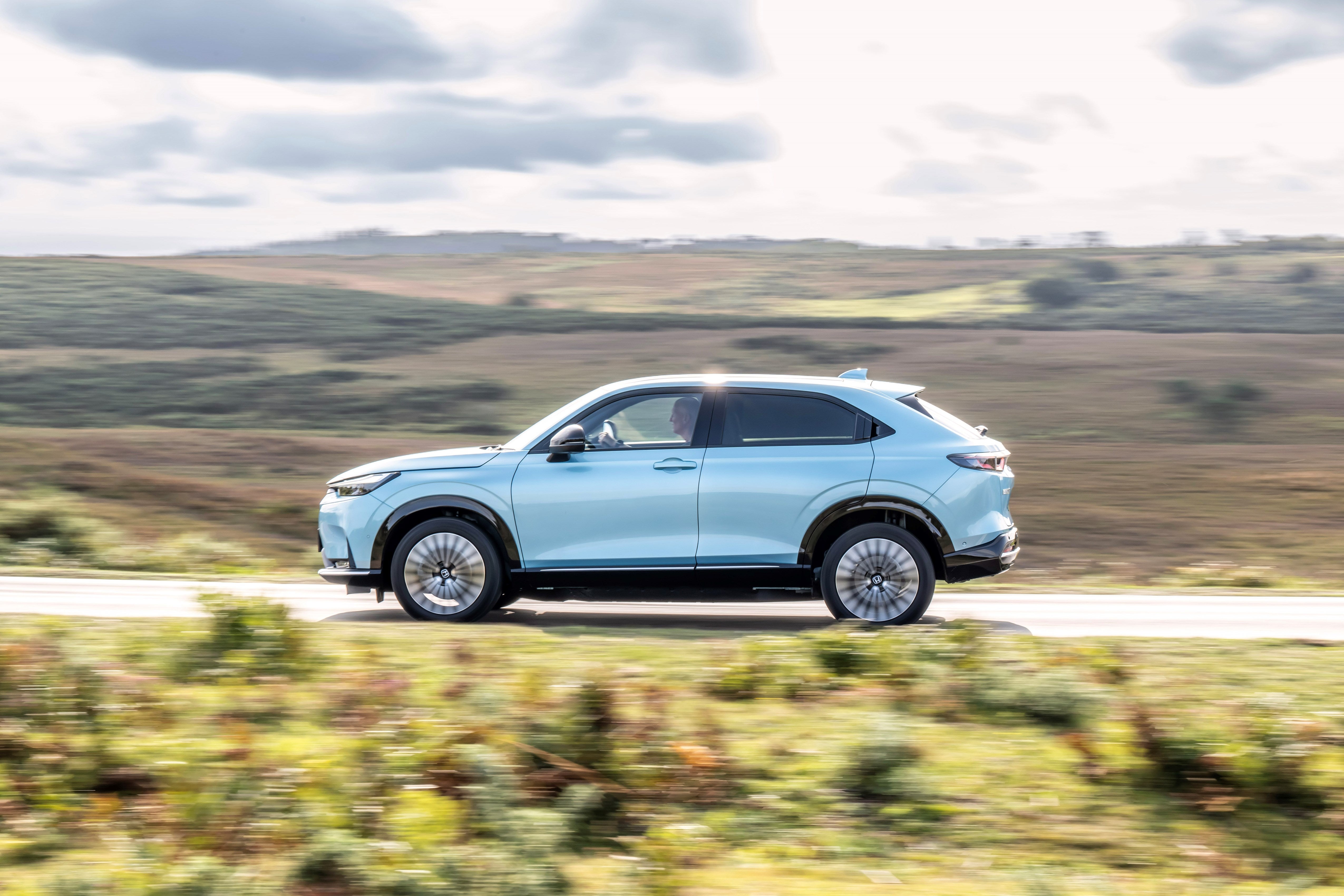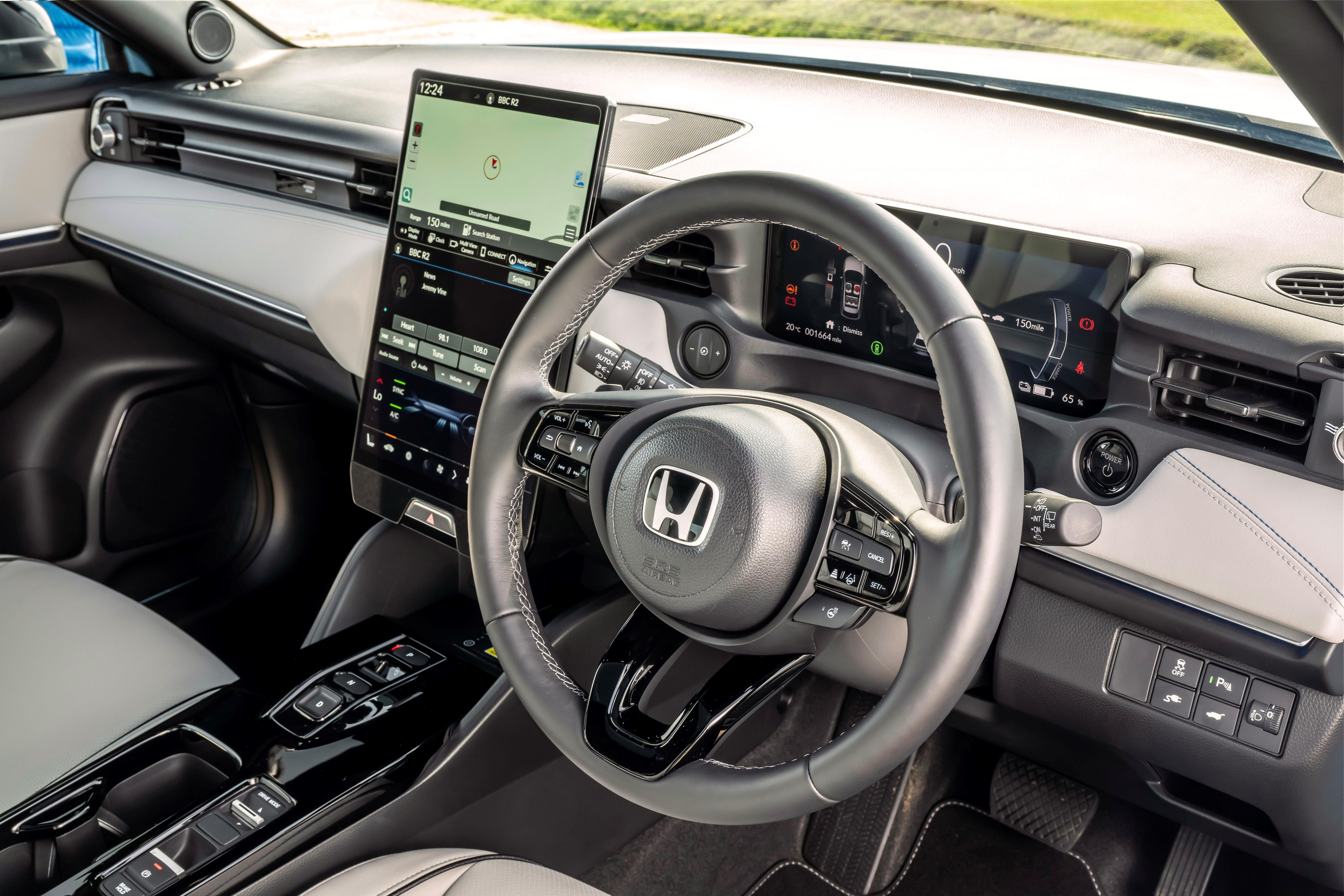Car review: Honda e:Ny1 Advantage – easy to drive, harder for anyone to say
After Honda’s eye-catching electric car debut, its follow-up was always going to be an anticlimax, writes Sean O’Grady. Its e:Ny1 model is comfortable and driver-friendly but comes up short compared with the competition

Your support helps us to tell the story
From reproductive rights to climate change to Big Tech, The Independent is on the ground when the story is developing. Whether it's investigating the financials of Elon Musk's pro-Trump PAC or producing our latest documentary, 'The A Word', which shines a light on the American women fighting for reproductive rights, we know how important it is to parse out the facts from the messaging.
At such a critical moment in US history, we need reporters on the ground. Your donation allows us to keep sending journalists to speak to both sides of the story.
The Independent is trusted by Americans across the entire political spectrum. And unlike many other quality news outlets, we choose not to lock Americans out of our reporting and analysis with paywalls. We believe quality journalism should be available to everyone, paid for by those who can afford it.
Your support makes all the difference.If you think about it, as you ought, the arrival of the battery electric car represents a mortal threat to most established makers of automobiles, and especially to those who’ve built up formidable technical expertise in the internal combustion engine.
Some have adapted rapidly. Some not. Understandable (and if the critics are right, it might not end badly for the later arrivals).
If you’ve spent decades perfecting the art of building exquisitely engineered petrol and diesel engines, making them run efficiently and reliably in equal measure, but you have then to start from scratch with the new battery technologies, it must hurt. Your technological advantage is wiped out, your sunk investment and proud expertise in the old technology rendered worthless, and your intellectual property time expired. All you are left with is a badge, plus the ability to actually put a car together. That isn’t something that all the newcomers can do...
This brings me to the curiously named Honda e:Ny1 the nearest thing in car badging to a Scrabble hand and looks tricky to say. Actually, it’s supposed to be pronounced “Anyone”. Geddit?
Anyone? Anyway, it’s new and it represents the problem Honda and its compatriots face. The visionary Soichiro Honda started life as a mechanic in the 1920s, began making motorbikes after the Second World War and the first cars followed in the 1960s. They, following the motorbikes, were characterised by ultra-smooth high-revving engines, which encouraged a sporty kind of driving (even though much of the elderly clientele declined to take up the offer of pushing the rev counter into the red zone). The Honda Civic R, among passenger cars, was the apogee of the Honda way.
THE SPEC
Honda e:Ny1 Advantage
Price: £46,300 (as tested; range starts at £44,995
Drivetrain: Single electric motor, powered by 62kWh battery pack
Power: 201bhp
Top speed: 99mph
0-60mph: 7.7secs
Fuel economy: 4.1m/kWh
CO2 emissions: 0
Now? Those beautiful engines will soon be redundant. Honda is a distinctly late arrival. The little Honda e, a jewel-like town car, was its eye-catching electric debut, and, distinctive and desirable, it promised much. Perhaps inevitably, the next launch was going to be something of an anticlimax, and, with the best will in the world, the e:Ny1 doesn’t have that same appeal.
Being Honda, it has leveraged its skill at assembly and design into a medium SUV/crossover that’s at least competitive. It feels just as carefully constructed as any equivalent with an internal combustion engine, and that includes the petrol hybrid version of the e:Ny1, the HR-V, with which it shares most of its egg-shaped bodywork.
Being Honda, it couldn’t help but excel in the application of the BEV technology, which means that it’s extremely responsive, to the point of alacrity, especially in sport mode, when the torque delivered to the front wheels almost overwhelms them and the driver too. The engineers have also found a way for it to get charged especially quickly – an extra 60 miles worth of leccy pumped into the batteries in 11 minutes with the fastest commercial chargers, and it doesn’t slow up so much after it hits 80 per cent capacity. It sounds different too. I’m not sure whether this is deliberate or not, but the Honda also has a slightly noisier than usual drivetrain for an electric car. It’s no high-pitched screaming S2000, but it does at least make a bit of a noise.

But, unlike the old ICE Hondas, this one doesn’t make you want to push things. It’s “nice” to drive, and that’s about it. It’s a docile sort of beast, and it’s very much sober family or comfortable retiree transport, and I suspect that most of its owners won’t bother to shift it out of economy mode.
It does that pretty well, though. The cabin is fairly roomy, and, as usual with cars in this class, it’s really a four-seater rather than good for five, which I suspect is some sort of marketing game. The cabin materials are of good quality, and the controls have a familiar Honda lightness to them. There’s a big tablet touchscreen on the dash, which is safer to use than most of them but still not as sensible as old-fashioned physical dials, knobs and buttons, something the industry is starting to realise. If you don’t think you can drive and use an iPad at the same time – you’re right. The worst sin is that this very important car for Honda – a proudly independent but smaller player in a landscape of behemoths – is rather anonymous, and there’s no sense of it being as strong a contender as it needs to be. It appeals to the Honda loyalist but I doubt it’ll attract much attention elsewhere.
I’d say the e:Ny1 is not quite as pleasant to be in as the Jeep Avenger or BMW iX1, it’s behind the Kia Niro for efficiency, and it’s nowhere near as good value as the (smaller) MG4, but for the Honda fan there is at least here a realistic step into the future. Just don’t try revving it.
Join our commenting forum
Join thought-provoking conversations, follow other Independent readers and see their replies
Comments